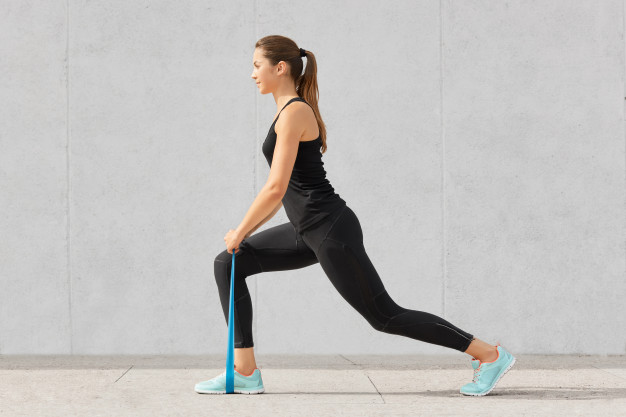Resistance bands are small, flexible, and come in a variety of resistance levels. These tiny bands are lightweight, portable, and safe to use at home or at the gym. They’re inexpensive and convenient and a great alternative to weights, yet they offer a surprising range of benefits to both beginners and experienced athletes.
Resistance bands are an easy way to engage your muscles in a fun new way. They’re great for resistance training and come in a variety of resistance levels, so you can start easy and build up or stay strong. The major benefit associated with them is resistance bands are a safer alternative as they put less stress on the joints. Experts suggest that resistance bands are the safest methods to increase your bone strength and prevent osteoporosis.
Why do resistance bands work?
Though resistance bands have a host of uses, they are most commonly used to help build up strength and muscle. More often known as ‘elastic’ bands, you can achieve resistance by varying the band’s length.
Apart from being cheap, it is also an effective tool to assist you with your workouts. They can provide additional benefits that a dumbbell or kettlebell can’t provide. As you stretch the resistance band, they create tension in your muscles and cause them to contract. The more you stretch, there’s more tension, making the exercise even harder.
If you aren’t sure which exercises you should be doing with the resistance bands, get the help of training experts at Oakleigh gym. They will guide you in performing exercises easily at home and at the gym.
Resistance Band Exercises
Some of the most common and effective resistance band exercises include:
-
Glute Bridge
Suggested Type of Band to be used: Small/ Mini, Medium/Heavy Strength.
To start with the exercise, you must first lie on your back with your knees bent at 90 degrees and feet on the floor. Once you are in the position, wrap the resistance band around your thighs. Brace your core and press your heels as you squeeze your glutes and raise your hips towards the ceiling. It would help if you held onto the position for a few seconds before lowering back to the original position.
Start over again and do as many repetitions as possible. However, it is advisable to do 20 repetitions at a beginner’s level.
-
Deadlift
While doing this exercise, you should stand with your feet shoulder apart. Upon taking the position, place the resistance band under your feet and keep your back in its natural arch, with shoulders down and knees slightly bent. Then, you sit back and hinge forward at the hips till you feel the burn in your hamstring muscles. Along with that, make sure you wrap the ends of the band around your palm and feel the tension. Ensure your core is engaged throughout the exercise. While returning to your position, keep your back straight and push through your hips and heels as you squeeze your glutes. Return to the standing position and once again repeat the exercise.
-
Band Pull-Apart
Stand with your feet hip-width apart. Grab a resistance band with both hands and move your arms to a T position in front of your body. Slowly pull the band apart, keeping your hands and arms raised at shoulder height. In a controlled movement, bring the ends of the band back to starting position.
Get ready and get set! With these exercises, you’ll strengthen your back muscles and improve your posture. If you aren’t very sure of how to do these exercises, you can refer to an expert resistance band training. All you need to do is Google gym near me and choose the best gym as per its rating.
